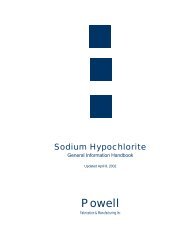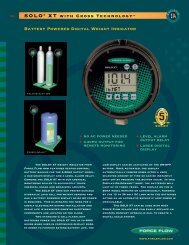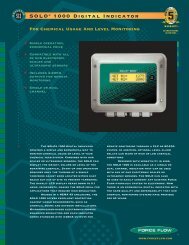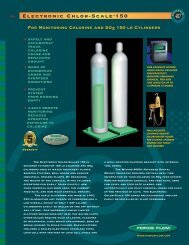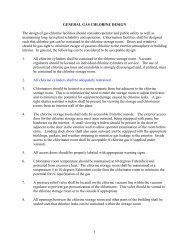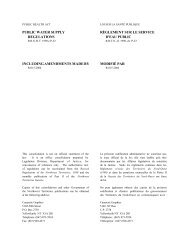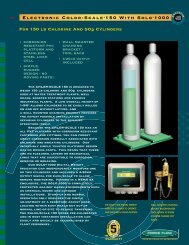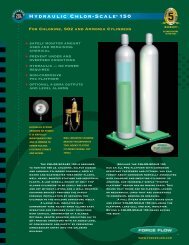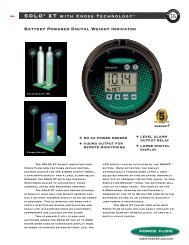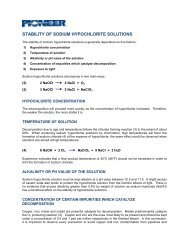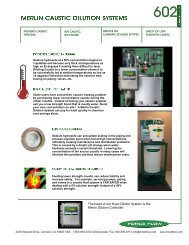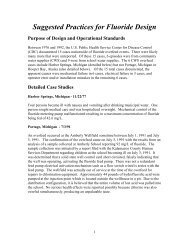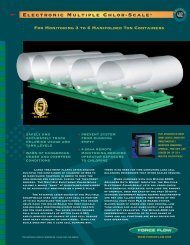Montana DEQ - Circular DEQ 2 - Design Standards for ... - Force Flow
Montana DEQ - Circular DEQ 2 - Design Standards for ... - Force Flow
Montana DEQ - Circular DEQ 2 - Design Standards for ... - Force Flow
Create successful ePaper yourself
Turn your PDF publications into a flip-book with our unique Google optimized e-Paper software.
Chapter 100Disinfection102.2 DosageFor disinfection, the capacity must be adequate to produce an effluent that will meetthe coli<strong>for</strong>m limits specified by the regulatory agency <strong>for</strong> that installation. Requireddisinfection capacity will vary, depending on the uses and points of application ofthe disinfection chemical. The chlorination system must be designed on a rationalbasis and calculations justifying the equipment sizing and number of units must besubmitted <strong>for</strong> the whole operating range of flow rates <strong>for</strong> the type of control to beused. System design considerations must include the controlling wastewater flowmeter (sensitivity and location), telemetering equipment and chlorination controls.For normal domestic sewage, the following may be used as a guide in sizingchlorination facilities:Type of TreatmentDosage102.3 ContainersTrickling filter plant effluent10 mg/LActivated sludge plant effluent 8 mg/LTertiary filtration effluent 6 mg/LNitrified effluent 6 mg/L102.31 Cylinders150 pound (68 kg) cylinders are typically used where chlorine gasconsumption is less than 150 pounds per day (68 kg/day). Cylinders shouldbe stored in an upright position with adequate support brackets and chainsat 2/3 of cylinder height <strong>for</strong> each cylinder.102.32 Ton ContainersThe use of one-ton (909 kg) containers should be considered where theaverage daily chlorine consumption is over 150 pounds (68 kg).102.33 Liquid Hypochlorite SolutionsStorage containers <strong>for</strong> hypochlorite solutions must be of sturdy, nonmetalliclined construction and must be provided with secure tank tops andpressure relief and overflow piping. Storage tanks should be either locatedor vented outside. Provision must be made <strong>for</strong> adequate protection fromlight and extreme temperatures. Tanks must be located where leakage willnot cause corrosion or damage to other equipment. A means of secondarycontainment must be provided to contain spills and facilitate cleanup. Dueto deterioration of hypochlorite solutions over time, it is recommended thatcontainers not be sized to hold more than one month's needs. At largerfacilities and locations where delivery is not a problem, it may be desirableto limit on-site storage to one week. Refer to Section 57.144



